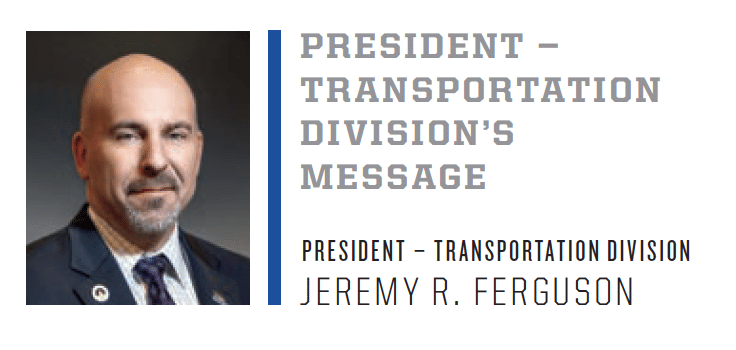Dear Brothers and Sisters:

As you are undoubtedly aware, voting on the 2022 Tentative Agreement concluded yesterday evening at 11:59 p.m. Eastern time. I would like to sincerely thank each and every member who exercised their right to participate in this ratification, regardless of how you voted. While the final outcome is somewhat disheartening, I am proud to say that SMART-TD members turned out in record numbers, and your voices have been heard.
Before addressing the ratification vote results and our next steps, it is important to note that Article 21B, Section 91, of the SMART Constitution pertaining to national contract ratifications states, in pertinent part:
“A majority of the members voting of each of the crafts to be covered or affected by the terms of the proposed agreement shall be required to ratify the offer of settlement.”
This requires that each historic craft we represent (e.g., Conductors, Engine Service, Brakemen, Yardmen) must ratify for an agreement to ratify.
It is also important to note that there are two separate agreements covering the affected SMART-TD members. Document “A” applies to members working in the crafts of Conductor, Engine Service, Brakemen, and Yardmen (collectively referred to as the “operating crafts”), while Document “B” applies specifically to Yardmasters. With that being said, the final results of SMART-TD’s ratification vote are as follows:
| Craft | In Favor | Opposed | Result |
|---|---|---|---|
| Conductor | 50.8% | 49.2% | Pass |
| Engine Service | 50% | 50% | Tie |
| Brakemen | 50.2% | 49.8% | Pass |
| Yardmen | 39.8% | 60.2% | Fail |
| Yardmaster | 62.5% | 37.5% | Pass |
As a majority of the members voting of each of the operating crafts did not approve the 2022 Tentative Agreement, Document “A” has failed ratification. As a majority of Yardmasters approved the 2022 Tentative Agreement, Document “B” is ratified, effective November 21, 2022.
With respect to the operating craft members outlined above, SMART-TD has entered a cooling-off period that extends through December 8, 2022. The National Carriers’ Conference Committee (NCCC) has already indicated to us that they do not intend to engage in further bargaining over these issues. This has been their behavior to the other unions that have failed to ratify during this round of bargaining. Nonetheless, SMART-TD’s negotiating team will return to the table and invite the NCCC to reopen good-faith negotiations during this period.
If the cooling-off period expires and an improved Tentative Agreement cannot be reached, self-help will be available commencing at 12:01 a.m. Eastern time, Friday, December 9, 2022. There will be no need for this office to conduct another vote seeking strike authorization, as the results of our July 2022 polling and the unanimous approval of the affected General Committees of Adjustment still apply.
Please note that this letter does not automatically constitute authorization to engage in self-help. Final authorization will come in a separate notice from this office. The earliest such notice could be issued would be on or after 12:01 a.m. on Friday, December 9, 2022. However, there is a distinct possibility that Congress may pass legislation to resolve this dispute and/or impose an agreement prior to the expiration of our current cooling-off period. In that event, no self-help authorization can be issued.
As additional information becomes available, updates will be shared with all SMART-TD members via email, the SMART Union website and Transportation Division social media pages.
With best wishes and sincere gratitude for your continued support, I remain
Fraternally yours,
Jeremy R. Ferguson
President – Transportation Division